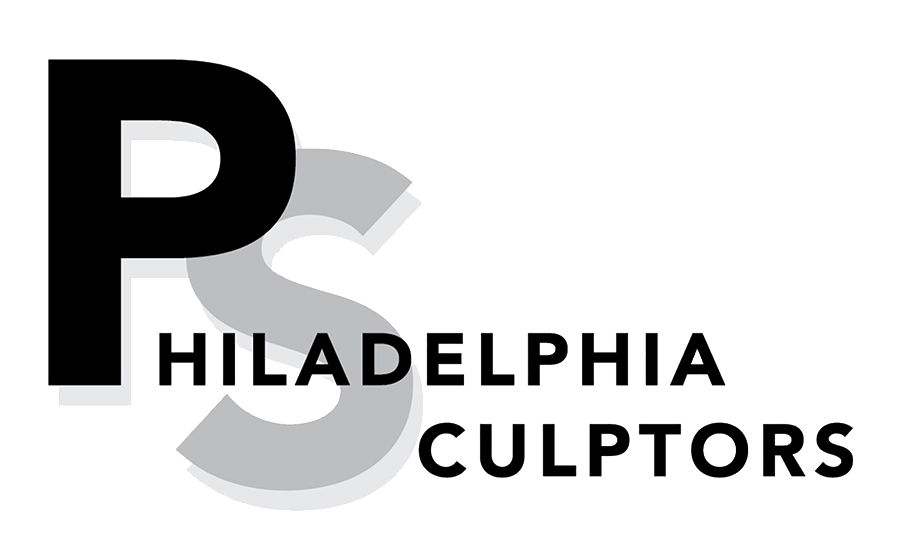Conversations
March 3 - April 2, 2017
Legend Galleries, Philadelphia, PA
Philadelphia Sculptors is proud to present our Spring 2017 exhibition Conversations, hosted by Legend Galleries. Whether engaging in dialogs with other artworks, contemporary topics, or even with themselves, the works in the show reflect the deep convictions of the artists. From concerns about the environment to personal trauma to racial and gender identity, the artists use three-dimensional media to expose issues having both current and historic urgency.
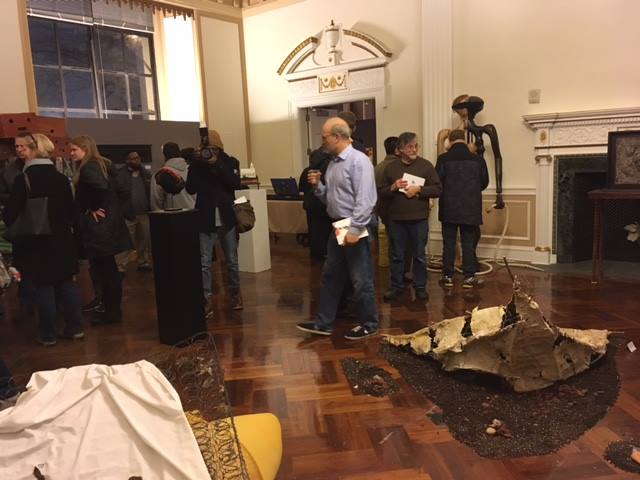
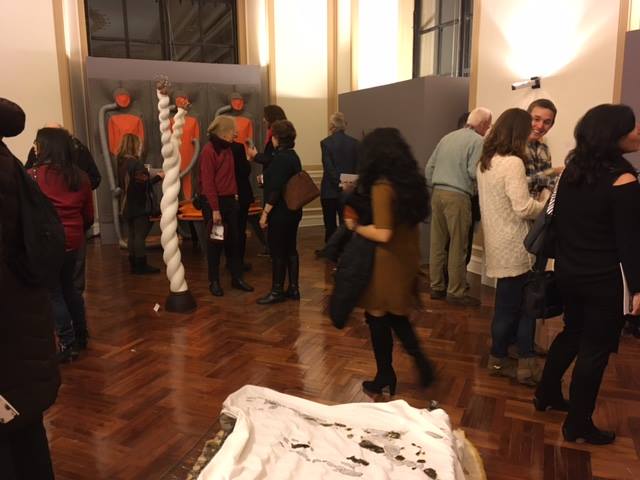



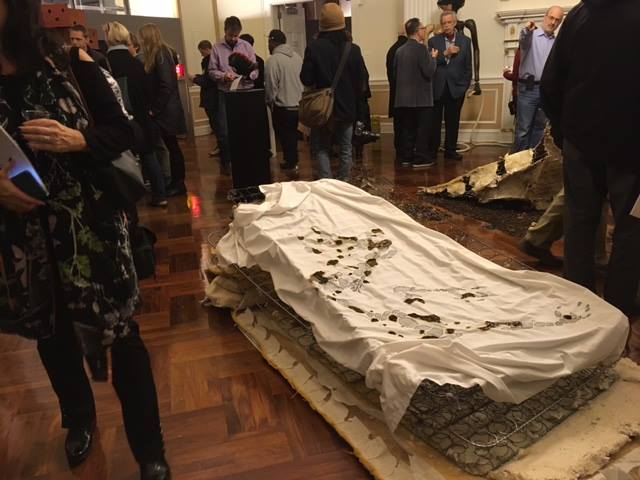
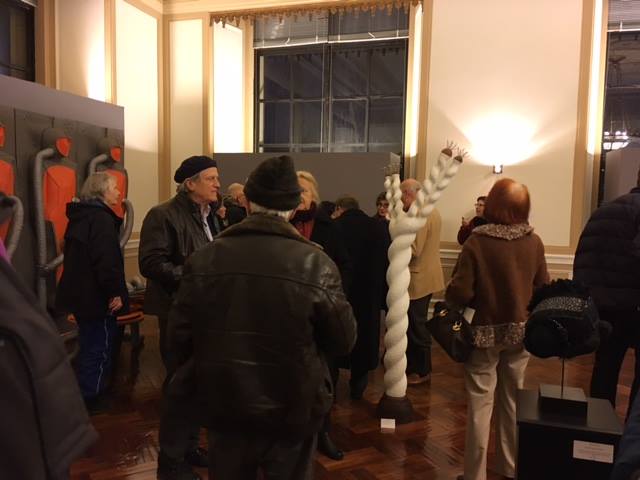

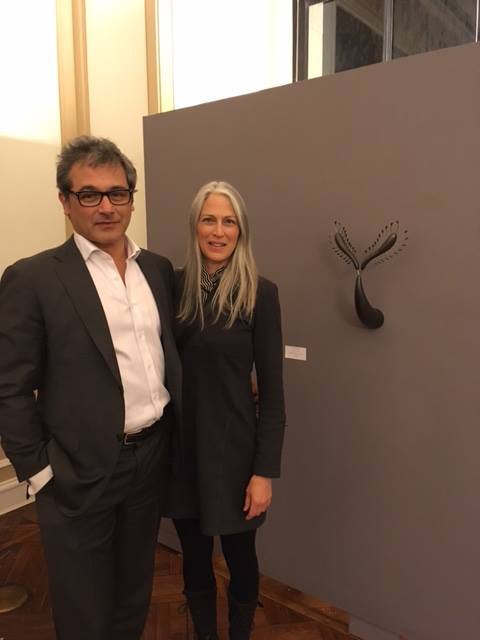
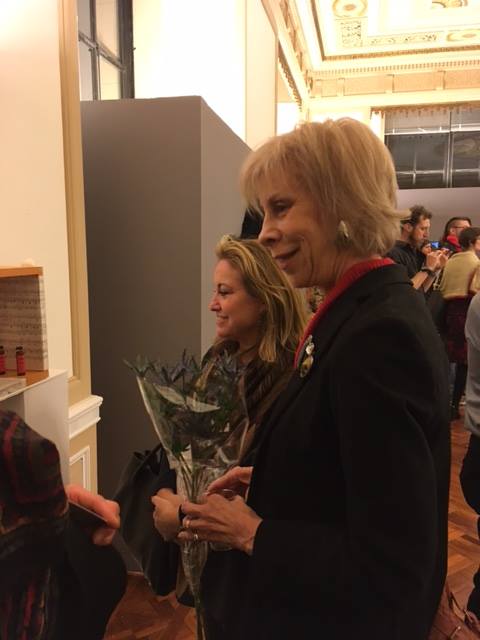
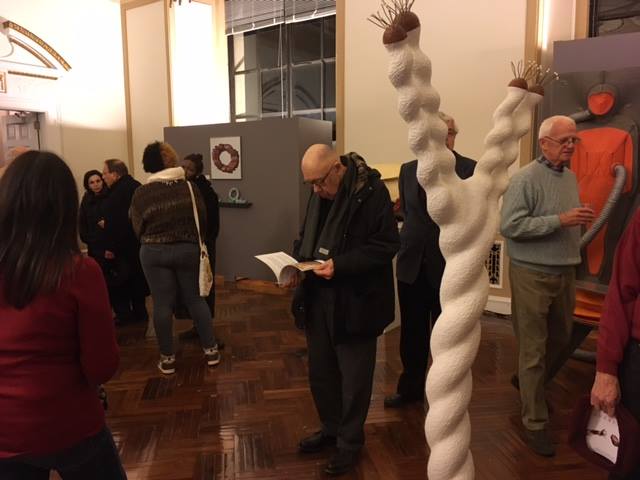

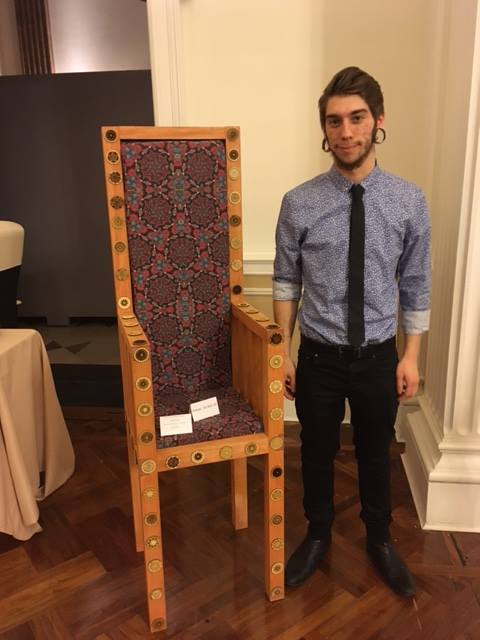
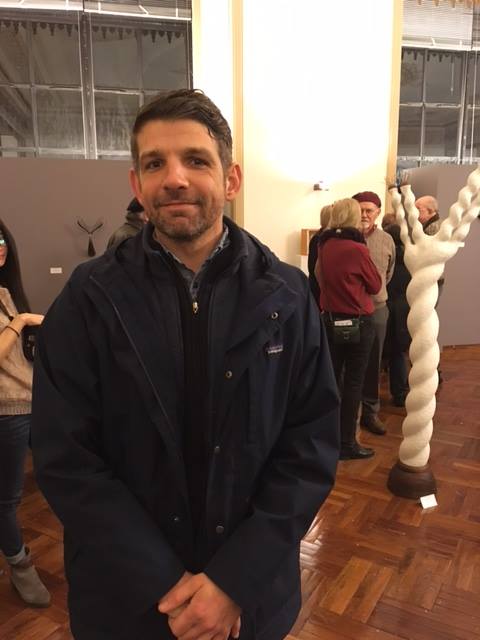
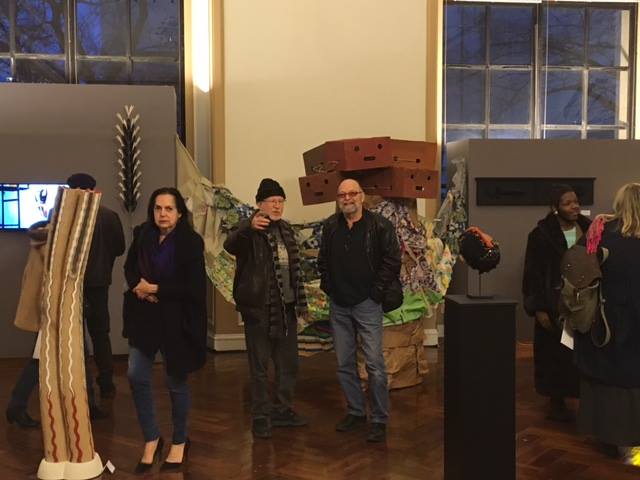
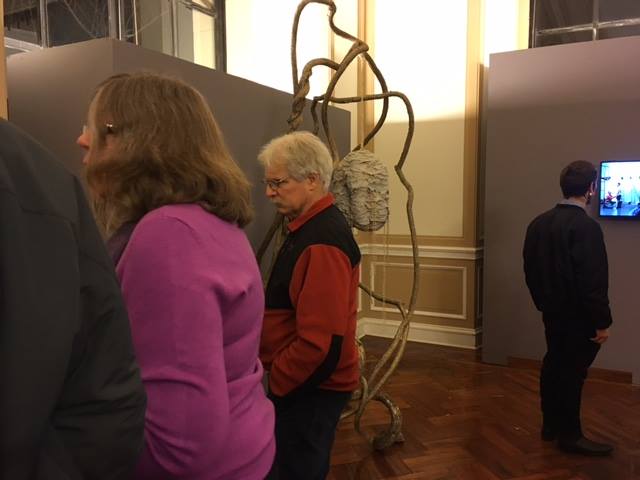
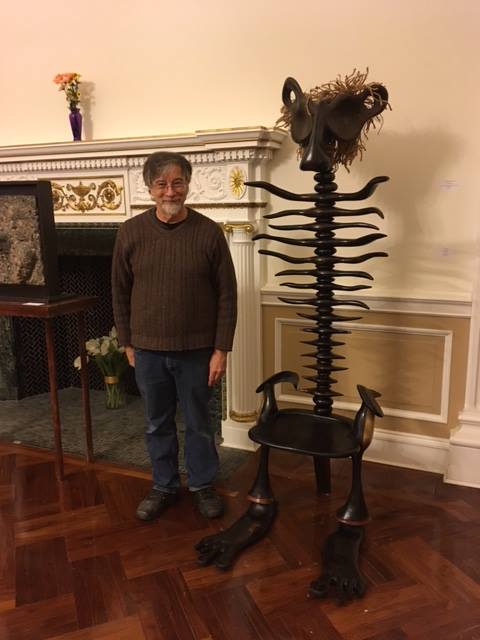
Juried by Curator, Artist and Master Printer Marc Blumthal, the 26 works by 22 local and regional artists speak to the viewer, and one another, within the elegant, naturally lit gallery. Blumthal explains his vision of how he created unity from the diverse works selected for the show:
"As the juror, I endeavored to create a platform for the work to be in conversation with each other by seeking unity through a diverse range of formal and conceptual elements. My hope for this inclusive approach is to curate a space where each piece may be considered individually, and later reconsidered within the larger exhibition."
Within the larger "conversation", smaller groups of artworks have their own discussions. A number of artists express their concern for the environment, and the relationships of humans to nature. Georgette Veeder addresses changes caused by human intervention as she illustrates the problem of the declining bee population with The Great Escape, made from wood and handmade paper. Linda Brenner repurposes discarded trees in Ghost and Red Roots by carving and then embellishing the trunks with recycled materials. Elizabeth Heller's Dreamer at Low Tide lets the dreamer's thoughts intertwine with the curling roots of a tree at the bank of a river. Rebecca Epstein's Paper Parlor is a large paper sculpture that explores the relationship between natural and human habitat. With Wheatsheaf and Anther, Marianne Lovink takes the concept further by inventing mixed media hybrid forms where "fiction meets fact" to explore consequences of genetic experimentation.
Combining unlikely materials and found objects provides opportunities to assess the meaning and substance of the materials themselves in the context of larger issues. c.l. bigelow's Alike Yet Different uses cast-off materials to create beauty and interest in detritus. In Church Kit Dan Clark uses a cheap plastic model of a church to explore its symbolism as both a building and a place of faith and worship. In Imprint: Upside Down, Mary Olin Geiger takes salvaged bedding materials that she burns and damages, and then adds needlework in order to draw attention to the conflicts involved with traditional perceptions of female roles. Pamela Tudor is also interested in gender issues and in How to Handle a Woman she adds a wry twist by showing sheet music of the Lerner and Lowe song of that name, along with empty bottles of deer tail extract. Terence Thompson provides a much more serious approach to issues of race, with Black Memories, a tower of rope, paper, boxes and toothpicks.
A number of artists are interested in using their art to probe more personal areas of psychology and spirituality. Melissa Madonni Haims's soft fabric sculptures IED #1 and IED #10 allude to her own psychological terrain, which she describes as an "interior landscape of chaos." Jessica Nora also tends towards the dark side, as she uses black yarn to create her flexible sculpture Aftermath H, addressing the emotions and internal struggles attached to the experience of a traumatic event. Charles Adams is interested in guardian figures from cultures around the world, and his carved wood Self as Guardian #1 and Guardian of the Divided States of America present imaginative, whimsical creatures that just might protect us from the evils of life. Zachery Young's bold Throne of Self Reflection provides a more affirming outlook, as its intent is to provide the sitter the opportunity for meditate on positive qualities and accomplishments.
Stories are often told through conversations, and in this exhibition, artists use art to reference diverse narratives. John Costanza's ceramic work El Salvador #1 brings "man's inhumanity to man" to our attention as he refers specifically to horrors happening in El Salvador, but more generally, to those taking place all over the world. Lisa Nanni's bright neon Opposition focuses on the current American political climate of conflict, as well as the flow and opposition of energy in our environment and in the cosmos. In David Page's Stack, unsettling vinyl "suits" stand in for figures whose punishment tells the story of incarceration and how that plays out in society. Coral Penelope Lambert's aluminum and steel bench sculpture Shape Shiftersprovides relief from the pressures of the world around us, allowing people to sit inside her forms and have their own conversations in a safe place. Leslie Kaufman's Once a Seed, the Red Glyphs Fell, represents multiple layers of narrative since the book-like sculpture is a response to the writings of a poet and the conversations that ensued between artist and writer.
The relationship between form and surface has inspired a number of artists in the exhibition. Paul Higham's Concrete Ships, Solar Eclipse with Falcon Song is a multiple part artwork that uses digital streams mined from populations in real time to illustrate the communication of birds and the convergence of natural phenomena, in "rings" of bronze, 3D printed plastic, and 2D print. Jeremy Sims' That, a pair of yellow ceramic columnar forms, is influenced by the "commodification" of design and explores relationships between the industrial and the handmade, the cheap and the costly. In Color and Form #1, Kathleen Shaver paints one plaster form in bright primary colors, and scribbles black calligraphic markings on a second similar form to suggest a dialog between a language of color and one that appears as black and white text.
